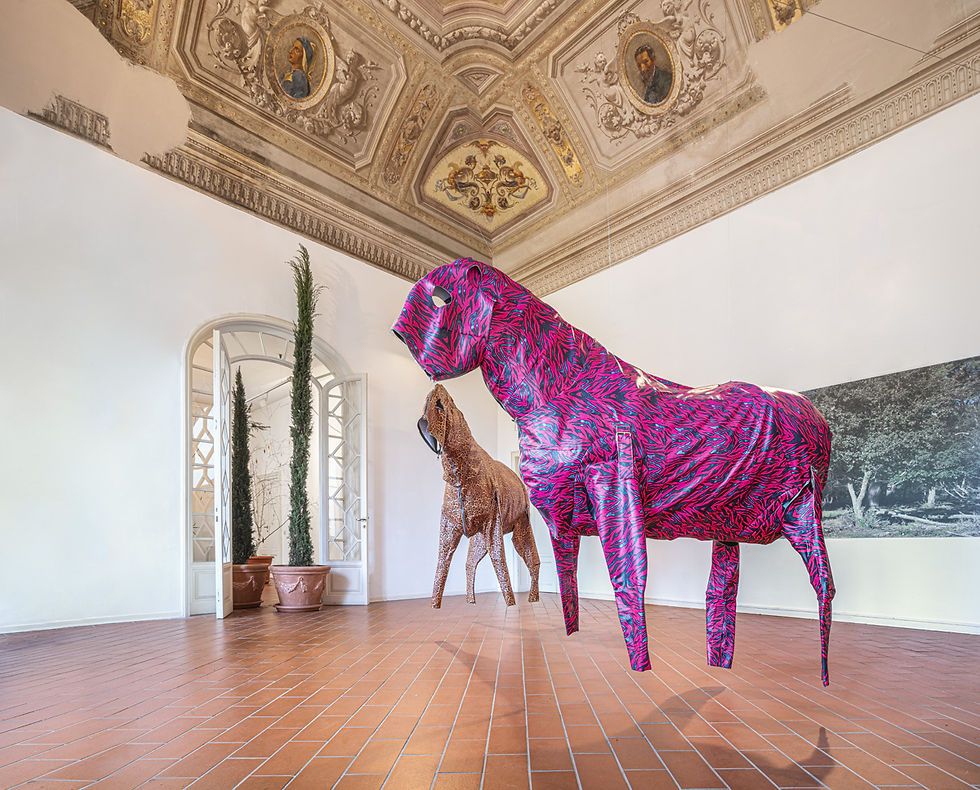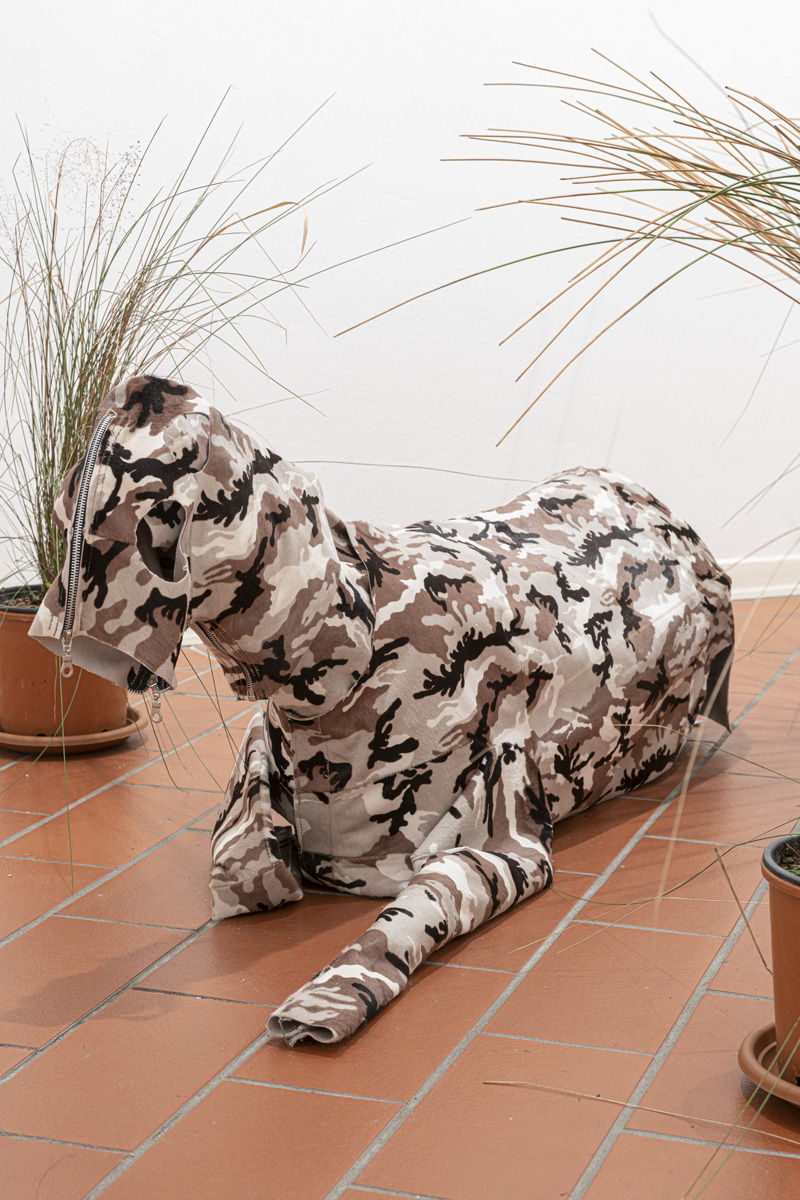PALIANYTSIA 2022
PALIANYTSIA 2022
The Animalier project was conceived and fulfilled in the fall of 2019. Zhanna Kadyrova arrived in Santa Croce sull'Arno at the invitation of the curator Ilaria Mariotti as part of the Arte – Impresa – Territorio project. For several centuries, Santa Croce sull'Arno in the Tuscany region of Italy has specialized in the processing of animal skins for the luxury and fashion industry, having produced most of the country's leather as of 2019. Within the program, the invited artists learn the history and all the technical aspects of leather processing in this region. Working with the local context and materials is consistent with Kadyrova’s ideas and practices of the recent years.
After visiting Santa Croce several times, the artist familiarized herself with its infrastructure. Leather production is surrounded by numerous subcontractors – the manufacturers of equipment and chemicals, providers of different services, and waste treatment facilities. All this determined the economic, social and architectural outlook of the vast terrain – from specific city planning to particular ways in which public and cultural institutions function. The artist was impressed by the richness of textures and a variety of colors created by local manufacturers.
By responding to the market demands and adjusting to the dynamic environment, they rethink the functions of rare materials. By processing, dyeing and printing, they mimic the skins of endangered animals, or invent colors and textures that do not exist in the wilderness. Taking these materials as a basis, Kadyrova designed costumes and dresses for animals familiar to humans, such as horses, cows, goats, chickens, and geese. Horses in strange clothes set off on a journey through the empty city streets, while chickens and geese pose against the views of Tuscan countryside. Horses wear costumes made of cow skin with leopard, or tiger-like, coloring, while birds wear the same skin with embossing which mimics the scales of snakes and pythons.
Transgression, inherent to the works, manifests a tension between nature and society – the imbalance which leads to the traditional roles reversal. In times of ecological crisis, endangered predators become more helpless than their herbivorous prey, while humans – superpredators at the top of the food chain – should think harder about their own vulnerability and elusiveness of the world as we know it.

ANIMALIER Santa Croce, Italy. 2020

ANIMALIER Santa Croce, Italy. 2020

ANIMALIER Santa Croce, Italy. 2020

ANIMALIER Santa Croce, Italy. 2020

ANIMALIER Santa Croce, Italy. 2020

ANIMALIER Santa Croce, Italy. 2020

ANIMALIER Santa Croce, Italy. 2020

ANIMALIER Santa Croce, Italy. 2020

ANIMALIER Santa Croce, Italy. 2020

ANIMALIER Santa Croce, Italy. 2020

ANIMALIER Santa Croce, Italy. 2020

ANIMALIER Santa Croce, Italy. 2020

ANIMALIER Santa Croce, Italy. 2020

ANIMALIER Santa Croce, Italy. 2020

ANIMALIER Santa Croce, Italy. 2020

ANIMALIER Santa Croce, Italy. 2020
© Тексты о работах: Олена Червонык, Виталий Атанасов
© Дизайн: Денис Рубан
© Переводы: Лариса Бабий,
Екатерина Кочеткова, Марьяна Матвейчук,
Куролай Абдухаликова